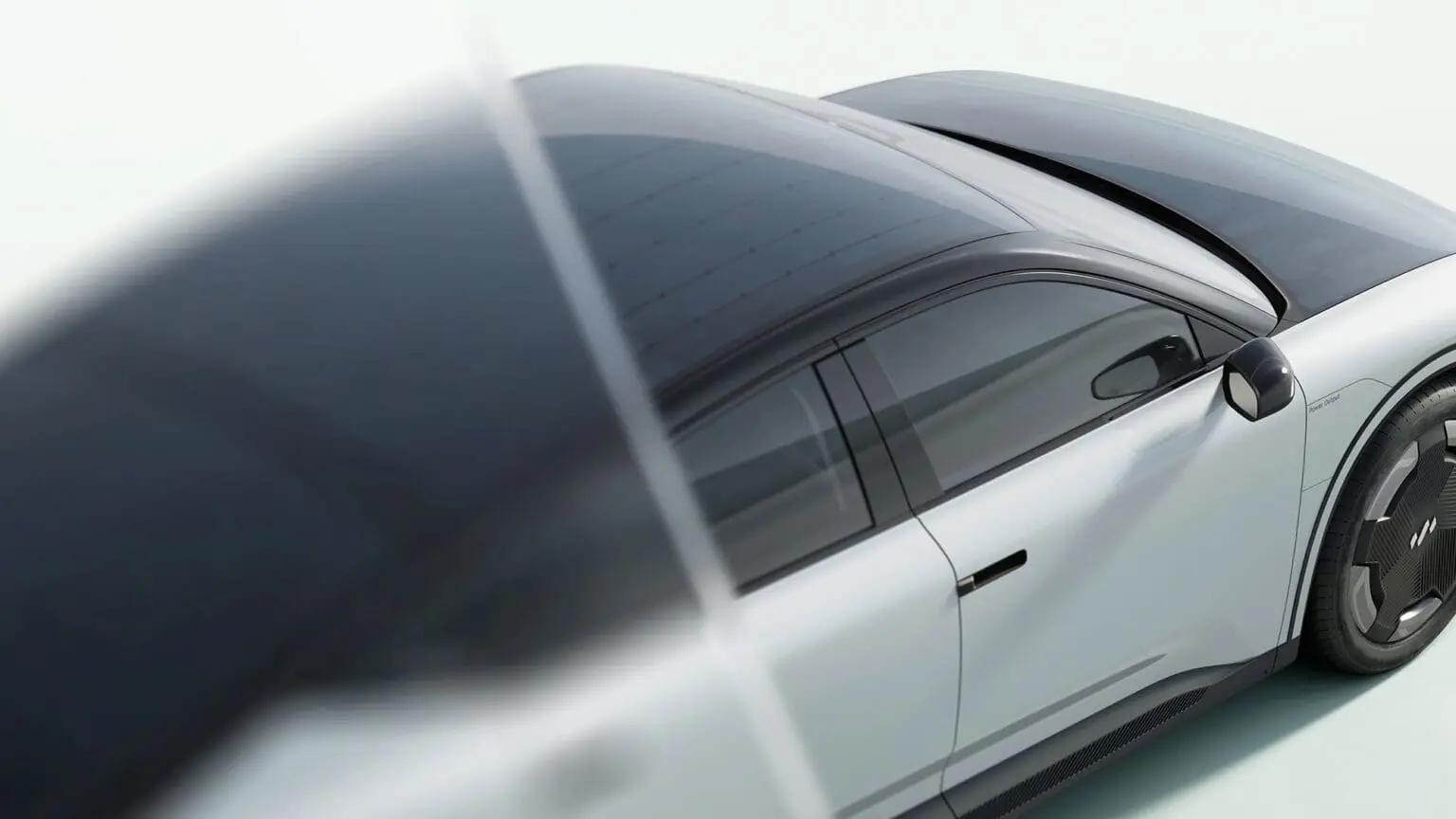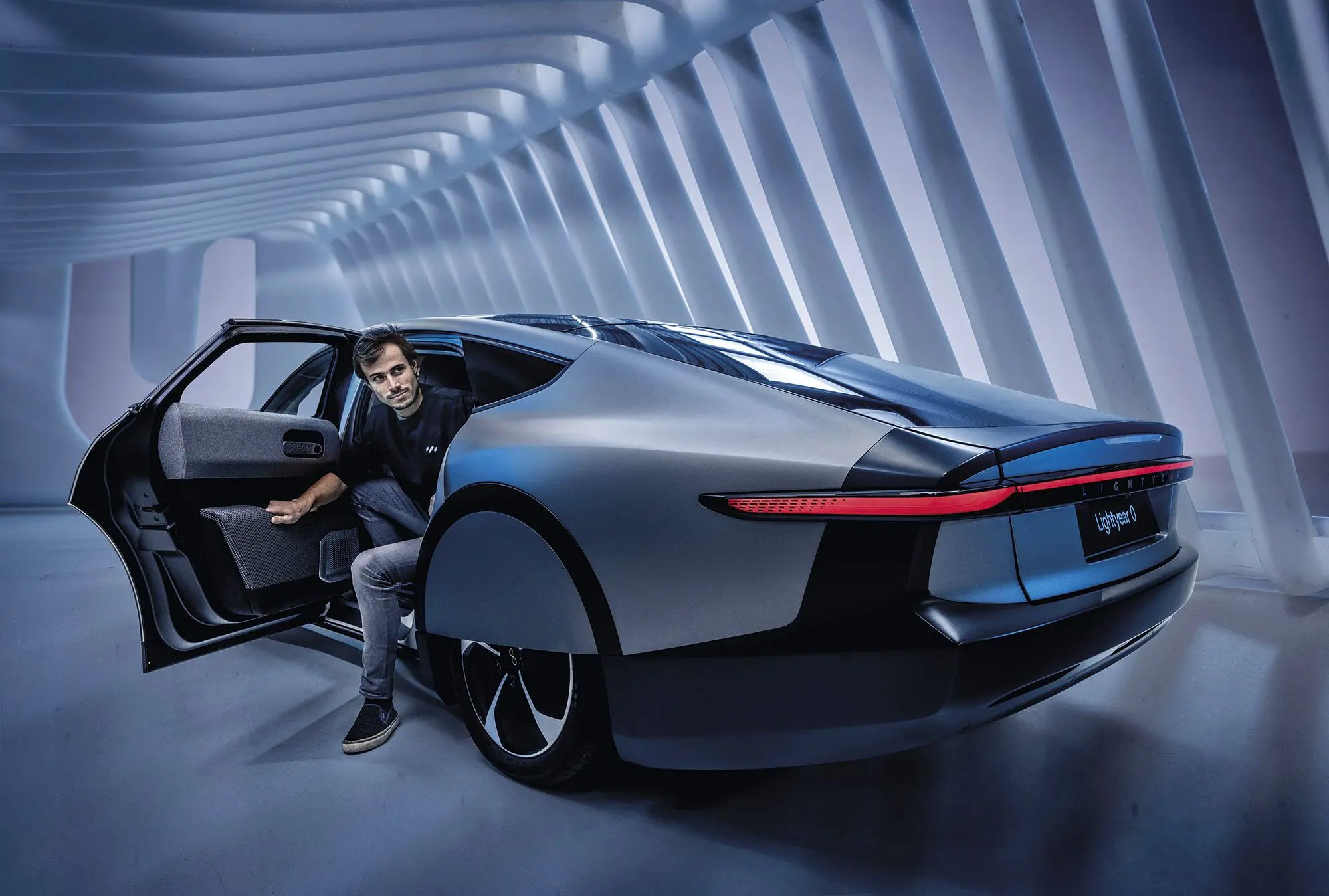Blue Sky Thinking
A Dutch company is developing a solar electric car. The goal: charging anywhere there’s sunshine, even on the go.
By Ben East
The sleek, five-seat car sports a two-tone look, cool grey on the chassis and a polished black that arcs from the bonnet to the aerodynamic hatchback. But on closer look, the black is actually monocrystalline silicon solar cells. This car can run on the sun.
“The technology works and we have big ambitions for it. We stand by our company’s mission to make clean mobility accessible to everyone, everywhere,” says Lex Hoefsloot, chief executive of Lightyear, a Netherlands-based company that has been working for seven years to develop a solar electric vehicle (SEV). While the traditional automotive giants have been catching up with their own electric vehicles, or EVs, new entrants such as Tesla have disrupted the industry—and opened consumers’ eyes to new brands, like Lightyear.
EVs are finally taking off. The International Energy Agency predicts EVs will account for 16% to 34% of the market share for cars by 2030. Charging infrastructure has expanded rapidly, with 40% more publicly available charging points globally in 2021 alone, but EV sales risk outpacing charging rollout, which could dampen demand. Plus, charging them could overload strained electricity grids.
Lightyear builds charging capability into the vehicle itself, with five square metres of patented, double-curved solar arrays. The solar cells send electricity either directly to the four drive-in-wheel motors or to the car’s 60 kWh battery. The battery, which has plug-in charge capability like an EV, is smaller and lighter, but because of the ability to switch to solar charging on the go, the estimated range is longer, at around 500km.
Lightyear was formed in 2016 and began putting its prototype, Lightyear 0, into production late last year. On a sunny day, the car can charge up to 70 kilometres of range per day from the sun alone. That means that in sun-rich regions like the Middle East, a Lightyear might not even need to plug in to top up the battery for quotidian trips. In general though, the car’s solar panels would act as a green range extender, with the battery charging fully overnight at home, for example.
The global love affair with cars has run on oil, mostly from the Gulf. It is also the ideal place for exploiting solar power. According to a World Bank Report, the UAE’s practical solar power potential is in the top 15 in the world and is more than double most European countries. The UAE’s drive to Net Zero by 2050 counts on solar power. Abu Dhabi is home to the world’s largest single-site solar power plant, the one gigawatt Noor Abu Dhabi, and the 1.5 gigawatt Al Dhafra Solar PV will surpass that once operational.

The prototype, Lightyear 0 is exceptionally aerodynamic; the low drag coefficient means less energy consumption and more range. Lex Hoefsloot, Lightyear’s chief executive, top image, has big ambitions for the technology. Top photo: Martin Dijkstra/Lumen Photo; Above: Lightyear.
Lightyear has partnered with the nearby Sharjah Research, Technology and Innovation Park. “The collaboration has a number of functions,” says Hussain Al Mahmoudi, its CEO. “Lightyear can conduct research and development related to the technology of the car within our climate. Another is to join hands in marketing and promoting this new innovation and new technology throughout the Middle East—and to be able to forge partnerships with various strategic entities.”
The concept fits too, Al Mahmoudi says, with what this year is all about—from November 30 the UAE will host COP28, the United Nations’ climate change conference. In Paris in 2015, 196 delegations agreed to reduce greenhouse gas emissions by 43% by 2030. Changing the way we travel is crucial to that. Lightyear says its vehicles will produce 50% fewer lifetime emissions than conventional EVs.
“We’re also collaborating with the EU to find the most logical future for electric cars,” Hoefsloot says. “But in the Middle East, it’s more than just testing that the technology works. It’s making sure we’re ready for distribution and sales come 2025 when Lightyear 2 is rolling off the production line.”
A second generation, the design for Lightyear 2 was teased at CES in Las Vegas in January, one of the world’s biggest tech events. A mass-market model, Lightyear 2 aims to deliver affordable clean mobility. It will inherit the innovations of the earlier model at a fraction of the market price—Lightyear 2 will cost around $40,000, compared to nearly $300,000 for Lightyear 0. The eye-watering cost was the key reason production on the earlier model ran for only a month before the company was forced to restructure. “It was a painful period,” Hoefsloot says. “But our belief in the concept didn’t change—in fact, it became stronger than ever. We proved that we could build a solar car and bring it into production. It wasn’t a dream.”

The design for Lightyear 2, shown here, was teased at tech event CES in Las Vegas in January, but has yet to be fully unveiled. Photo courtesy of Lightyear.
When a waitlist opened for Lightyear 2 earlier this year, 45,000 people signed up. Next will be pre-orders. Lightyear is now finalising production, some of which might be in the Middle East. Lightyear 0 may also be on UAE roads in the coming months as the company uses the prototypes for testing.
Hoefsloot got his start in the Netherlands’ solar-powered racing scene—the country isn’t noted for blue skies but boasts multiple world titles. “I think it’s because we crave the sun,” he jokes.
As science students at Eindhoven University of Technology, Hoefsloot and his friends built a five-seat solar car. Named Stella, it looked like the fuselage of an aeroplane. Their “Solar Team Eindhoven” won the World Solar Challenge’s five-seater vehicle “cruiser class” in 2013, their SEV travelling up to 1,500 kilometres on a single charge. Different iterations of Stella would go on to win on three more occasions. By then Hoefsloot had set up Lightyear.
“We realised that we were going to make a lot more impact if we could make a physical product,” Hoefsloot says. The goal was an electric vehicle with a fossil-fuel-free range extender. “Technically, it’s not the easiest to make happen, but if you can crack it, there’s almost no charging, the sun’s free—there’s a huge opportunity.”
The engineers started with more efficient motors directly in the wheels, which were covered to help the aerodynamics. Lightyear 0’s shape and lack of wing mirrors (there are cameras instead) made it exceptionally aerodynamic; a low drag coefficient means less energy consumption and more range. The challenge was to cover as much surface area as possible with ultra-efficient solar panels to generate enough power to drive the car. “And make it look good at the same time,” Hoefsloot says. On a sunny day, Lightyear 0 charges itself with up to 1.05 kilowatts, or the equivalent of 10 kilometres in one hour.
“All these different systems got us to the point where we could say the energy you need every day is the same as the energy you get from the sun every day,” Hoefsloot says. “That magic moment where you don’t need to charge anymore.”



